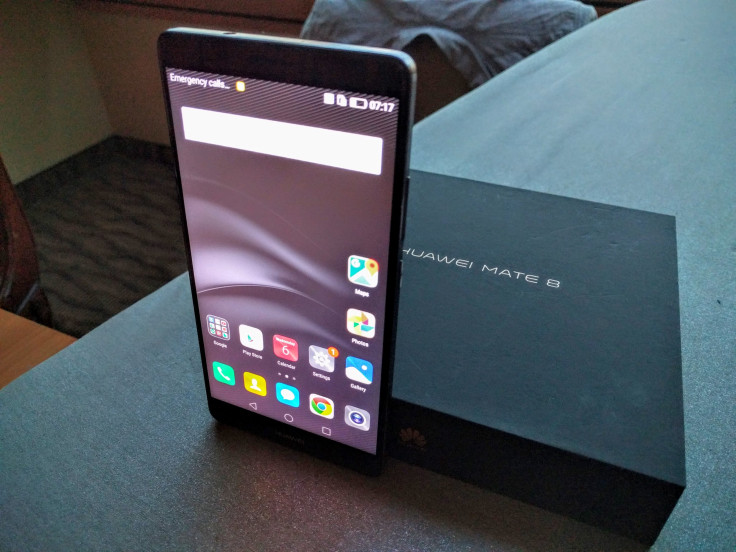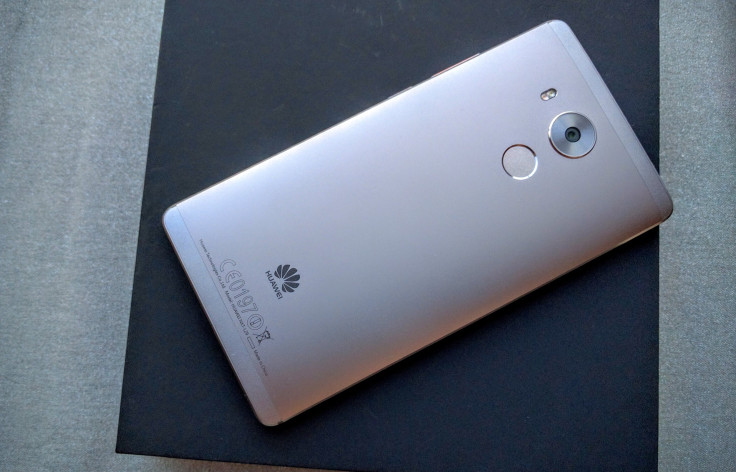Huawei Mate 8 Hands-On: A Real Challenger To The iPhone 6S Plus and Galaxy Note 5 [VIDEO]

LAS VEGAS -- Huawei has been steadily shedding its reputation as a budget smartphone maker in recent years and to that end the Chinese company made significant progress with the superb Mate S smartphone in 2015. At the Consumer Electronics Show here on Tuesday, Huawei launched its latest premium device, the Mate 8, a phablet which promises to go head-to-head with the iPhone 6S Plus and Galaxy Note 5 -- and I've been having a look.
The first think you notice about the Mate 8 is its screen. At 6-inches it is bigger than the iPhone 6S Plus and Galaxy Note 5 but with a footprint that is smaller than the iPhone 6S Plus, Huawei has worked hard to make this as compact as possible. And yet, at least for me, it is too big.
This is a phone designed for the Asian market which typically skews towards bigger screens. From a purely engineering standpoint, I can still admire the expertise which went into creating a slim and relatively lightweight phone with such a big screen.
The Mate 8 is all glass and metal, and the minute you pick it up you know it's a premium device. The chamfered edges look and feel great and the gold and brown models which sit alongside the silver and grey versions are subtle enough to be attractive.
Fast Fingers
One of the best features of the Mate S was its lightning fast fingerprint sensor mounted in the middle of phone’s rear cover. Somehow Huawei has made it even faster, unlocking the screen instantly and allowing you take a picture or answer a call by holding your finger on the sensor. Having used a fingerprint sensor this good, using anything less will feel like a step backwards.
Huawei has also improved the camera on the phone and in my initial testing it looks to be capable to standing up to the best in the market, handling the daunting lighting conditions of CES press day admirably, though more extensive testing is needed.
Huawei made a big play of the Mate 8’s battery life, promising three days of use. Speaking to Huawei representatives who have used the phone I got a different story. They told me that in real terms, if you are a relatively heavy user, you will get 1.5 days max from the battery -- which is still pretty good. Add to this a fast charge technology which promises to give you a day’s use from a 30-minute charge and it is definitely a selling point for the phone.

Homegrown Power
Huawei has put its homegrown Kirin 950 processor inside the phone and in the limited testing I have done it looks to be as fast as anything on the market, but I will need to do some more intensive testing to ascertain if the phone can handle multiple operations at once and if it overheats while doing so.
Among the more unique features the Mate 8 offers is omni-directional recording and directional playback thanks to three microphones which automatically detect sound sources and record voices from all directions. This means the phone can be used as a portable conference call device, though I have yet to be able to test this out.
In terms of software, the Mate 8 uses Huawei’s Emotion UI which is better than it was, but is still packed with apps and services you simply don’t need. Using Google Launcher you can get an experience close to stock Android on the Mate 8, but in 2016 you shouldn’t really have to.

First Impression
First impressions of the Mate 8 are overwhelmingly positive. It looks and feels great; has a lightning fast fingerprint sensor; has a great camera; has a big, bright screen and offers powerful processing power. The big problem of course is that if you live in the U.S., it is unclear when the phone -- which will cost from €599 ($643) when it launches in 30 countries later this year -- will come to North America.
© Copyright IBTimes 2024. All rights reserved.






















